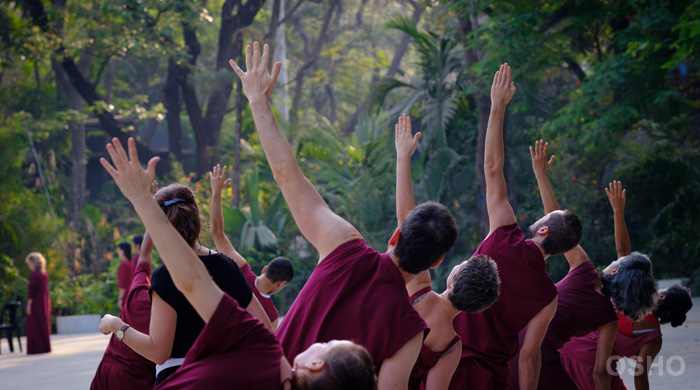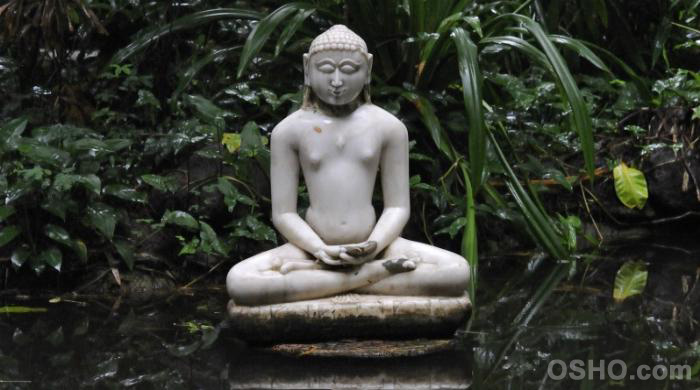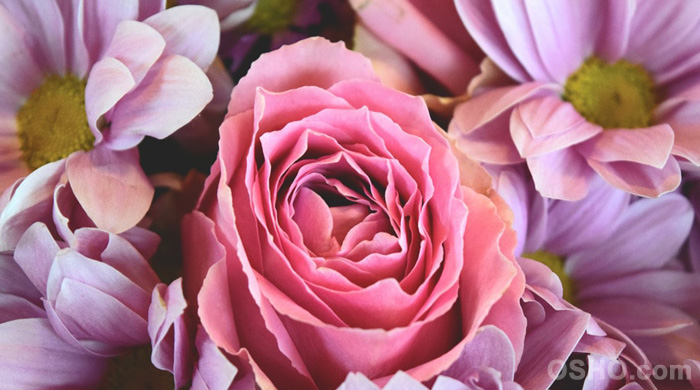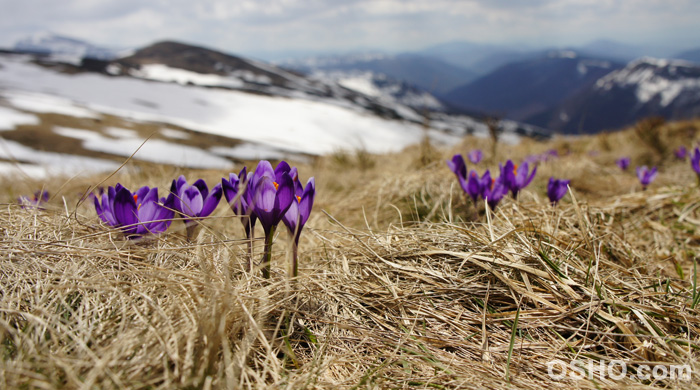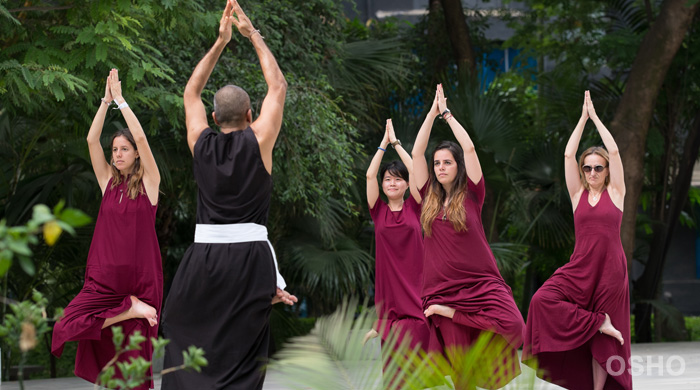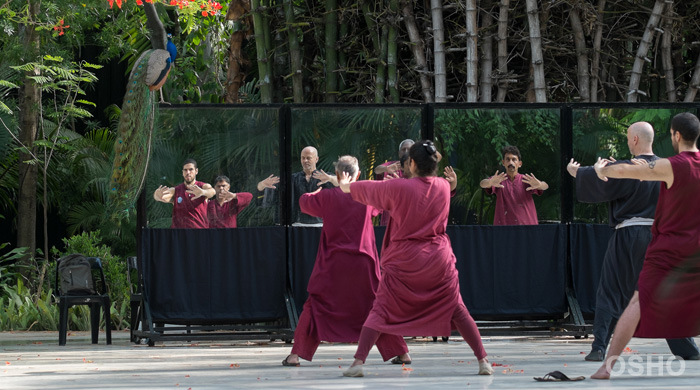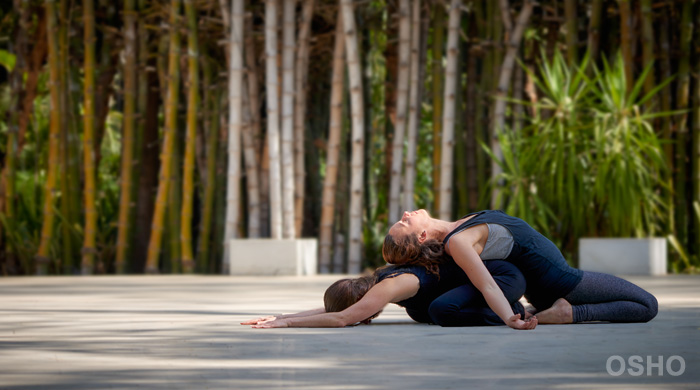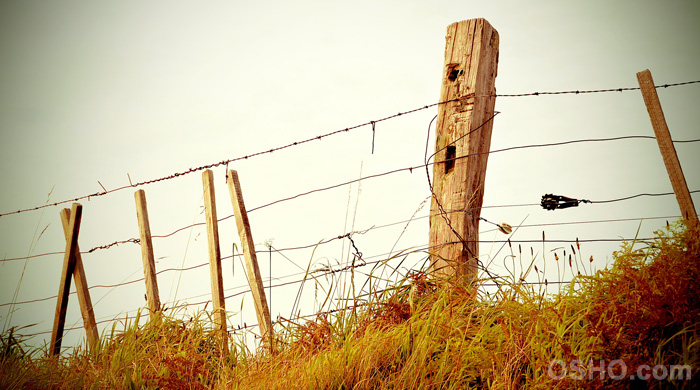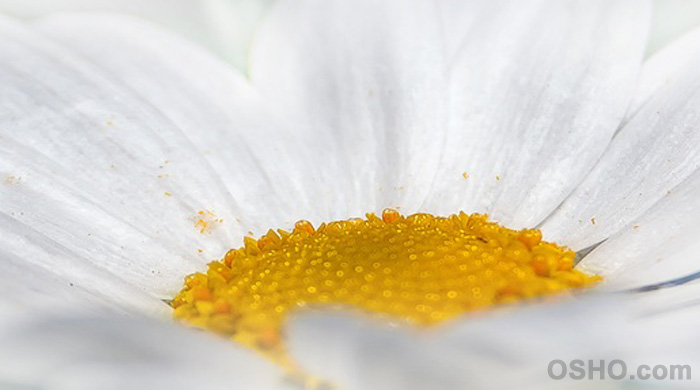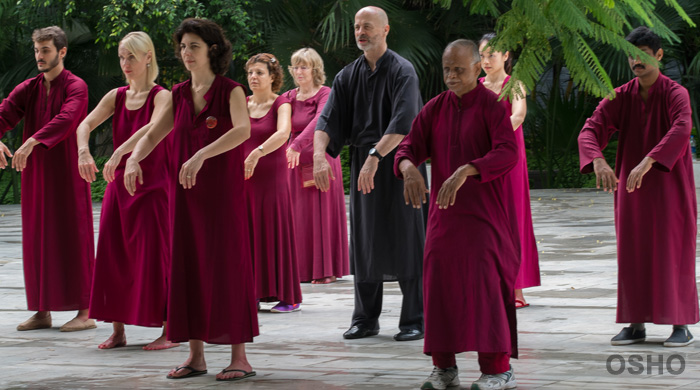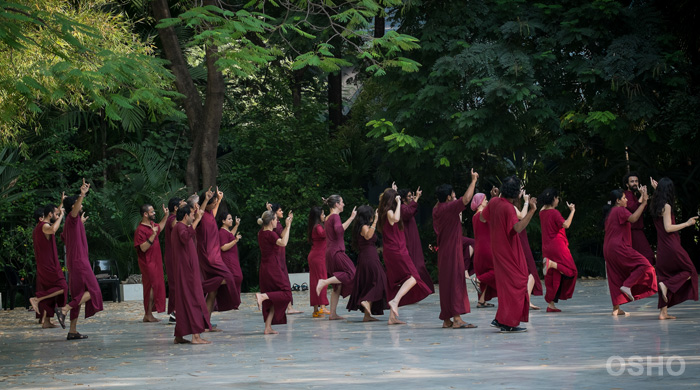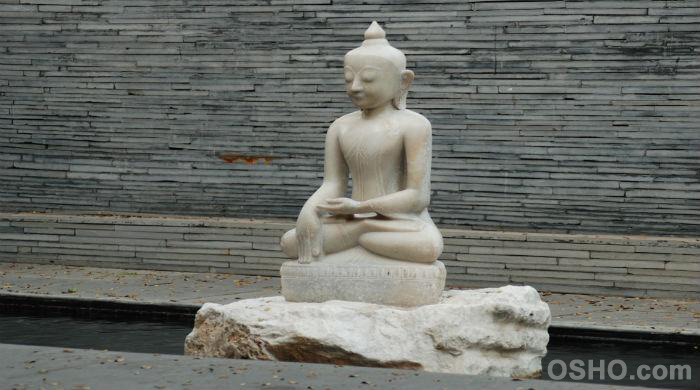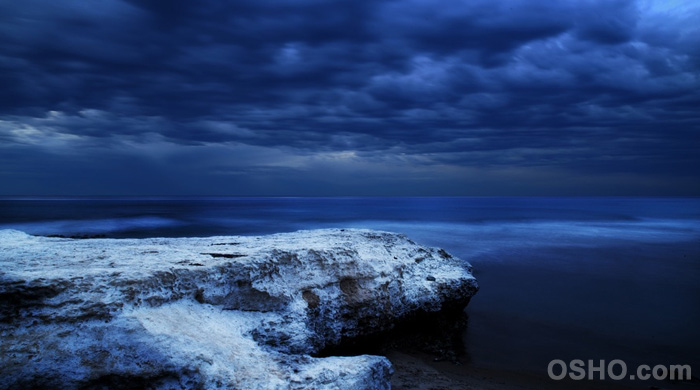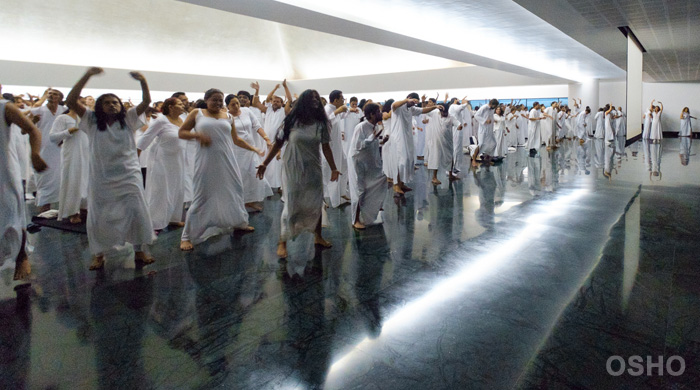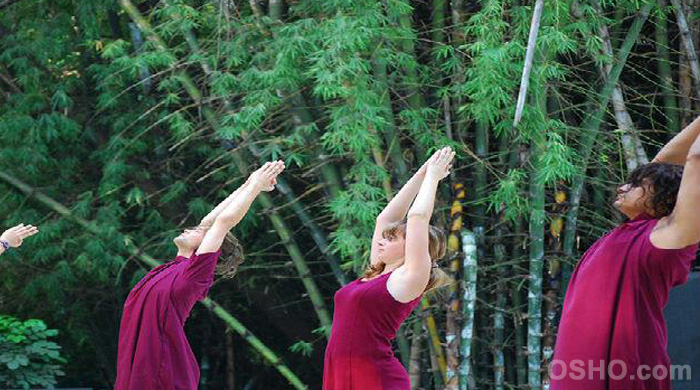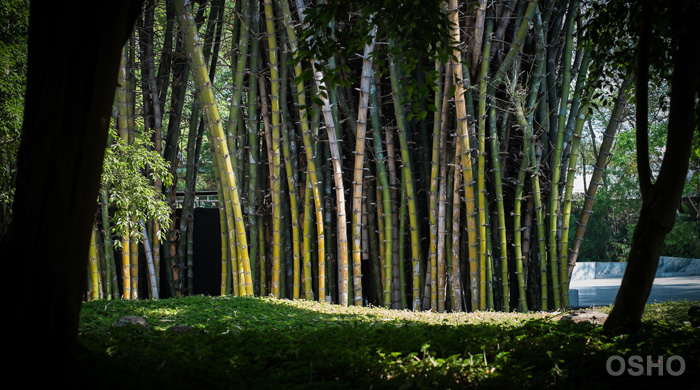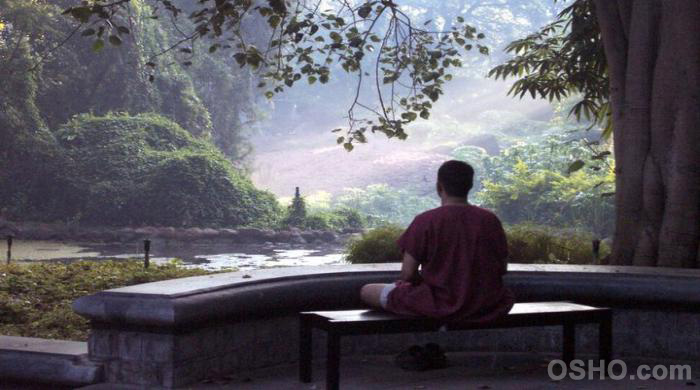Home Coming
Now a few more things.... Because this is such a central phenomenon for Patanjali you have to understand a few things more.
Yam is a bridge between you and others; self-restraint means restraining your behavior. Yam is a phenomenon between you and others, you and the society. It is a more conscious behavior: you don’t react unconsciously, you don’t react like a mechanism, like a robot. You become more conscious; you become more alert. You react only when there is absolute necessity; then too you try so that that reaction should be a response and not a reaction.
A response is different from a reaction. The first difference is: a reaction is automatic; a response is conscious. Somebody insults you: immediately you react —; you insult him. There has not been a single moment’s gap to understand: it is reaction. A man of self-restraint will wait, listen to his insult, will think about it.
Gurdjieff used to say that his whole life changed because when his grandfather was dying —; Gurdjieff was just nine years of age —; his grandfather called him and told him, “I am a poor man and I have nothing to give to you, but I would like to give something. The only thing that I have been carrying like a treasure is this, this was given to me by my own father.... You are very young, but remember it. Some day you will understand; just you remember it. Some day you will understand. Right now I don’t hope you will understand, but if you don’t forget, some day you will understand.” This is the thing he told to Gurdjieff: “If somebody insults you, answer him after twenty-four hours have elapsed.”
It became a transformation, because how can you react after twenty-four hours? Reaction needs immediacy. Gurdjieff says, “Somebody would insult me or somebody would say something wrong, and I would have to say, ‘I will come tomorrow. Only after twenty-four hours am I allowed to answer. I have given a promise to my grandfather; he is dead and the promise cannot be taken back. But I will come.’”
That man would be taken aback. He would not be able to understand what the matter was. And Gurdjieff will think about it. The more he thought, the more useless it would look. Sometimes it would be felt that the man was right; that whatsoever he had said was true. Then Gurdjieff would go and thank the man: “You brought to light something of which I was unaware.” Sometimes he would come to know that the man was absolutely wrong. And when the man is absolutely wrong, why bother? Nobody bothers about lies. When you feel hurt, there must be some truth in it; otherwise you don’t feel hurt. Then too there would be no point in going....
He said, “It came to pass that many times I tried my grandfather’s formula, and by and by anger disappeared.” And not only anger; by and by he became aware that the same technique can be used for other emotions: and everything disappeared.
Gurdjieff was one of the highest peaks that has been attained in this age, a buddha. And the whole journey started with a very small step, the promise given to an old man dying. It changed his whole life.
Yam is the bridge between you and others. Live consciously; relate with people consciously.
Then the second two, niyam and asan —; they are concerned with your body. Third, pranayama is again a bridge. As the first, yam, is a bridge between you and others, the second two are a preparation for another bridge —; your body is made ready through niyam and asan —; then pranayam is the bridge between the body and the mind. Then pratyahar and dharana are the preparation of the mind.Dhyan again is a bridge between the mind and the soul. And samadhi is the attainment. They are interlinked, a chain; and this is your whole life.
Your relation with others has to be changed. How you relate has to be transformed. If you continue to relate with others in the same way as you have always been doing, there is no possibility to change. You have to change your relationship. Watch how you behave with your wife or with your friend or with your children. Change it. There are a thousand and one things to be changed in your relationship. That is yam, a control —; but control, not suppression. Through understanding comes control. Through ignorance one goes on forcing and suppressing. Always do everything with understanding and you never harm yourself or anybody else.
Yam is to create a congenial environment around yourself. If you are inimical to everybody —; fighting, hateful, angry —; how can you move inwards? All these things will not allow you to move. You will be so much disturbed on the surface that that inner journey will not be possible. To create a congenial, a friendly, atmosphere around you is yam. When you relate with others beautifully, consciously, they don’t create trouble for you in your inner journey. They become helps; they don’t hinder you.
If you love your child, then when you are meditating he will not disturb you. He will say to others, “Keep quiet. Pop is meditating.” But if you don’t love your child, you are simply angry, then when you are meditating he will create all sorts of nuisances. He wants to take revenge, unconsciously. If you love your wife deeply, she will be helpful; otherwise she won’t allow you to pray, she won’t allow you to meditate —; you are going beyond her control.
A man of yam controls himself, not others. To others he gives freedom. You try to control the other and never yourself. A man of yam controls himself, gives freedom to others —; loves so much that he can give freedom, and he loves himself so much that he controls himself. This has to be understood: he loves himself so much that he cannot dissipate his energies; he has to give a direction.
Then, niyam and asan are for the body. A regular life is very healthy for the body because the body is a mechanism. You confuse the body if you lead an irregular life. Today you have taken your food at one o’clock, tomorrow you take at eleven o’clock, day after tomorrow you take at ten o’clock —; you confuse the body. The body has an inner biological clock; it moves in a pattern. If you take your food every day at exactly the same time, the body is always in a situation where she understands what is happening. and she is ready for the happening —; the juices are flowing in the stomach at the right moment. Otherwise, whenever you want to take the food, you can take, but the juices will not be flowing. And if you take the food and the juices are not flowing, then the food becomes cold; then the digestion is difficult.
The juices must be ready there to receive the food while it is hot, then immediately absorption starts. Food can be absorbed in six hours if the juices are ready, waiting. If the juices are not waiting, then it takes twelve hours to eighteen hours. Then you feel heavy, lethargic. Then the food gives you life, but does not give you pure life. It feels like a weight on your chest; you somehow carry, drag. Food can become such pure energy, but then a regular life is needed.
You go to sleep every day at ten o-clock: the body knows —; exactly at ten o’clock the body gives you an alarm. I’m not saying become obsessive —; that when your mother is dying then too you go at ten o’clock. I’m not saying that. Because people can become obsessive.... No need to become obsessive; everything has to be done with understanding.
Niyam and asan, regularity and posture: they are for the body. A controlled body is a beautiful phenomenon —; a controlled energy, glowing, and always more than is needed, and always alive, and never dull and dead. Then the body also becomes intelligent; the body also becomes wise; the body glows with a new awareness.
Then, pranayam is a bridge: deep breathing is the bridge from mind to body. You can change the body through breathing; you can change the mind through breathing. Pratyahar and dharana, returning home and concentration, belong to the transformation of the mind. Then, dhyan is again a bridge from mind to the self, or to the no-self —; whatsoever you choose to call it. It is both. Dhyan is the bridge of samadhi.
The society is there; from the society to you there is a bridge: yam. The body is there; for the body: regularity and posture. Again there is a bridge, because of the different dimension of mind from the body: pranayam. Then, the training of the mind: pratyahar and dharna, returning back home and concentration. Then again a bridge, this is the last bridge: dhyan. And then you reach the goal: samadhi.
Samadhi is a beautiful word. It means now everything is solved. It means samadhan: everything is achieved. Now there is no desire; nothing is left to achieve. There is no beyond; you have come home.
Patanjali: Scientist, Poet, Mystic

Patanjali. I call him the scientist of the religious wo....
Read More >Power Hazards and How to Avoid Them
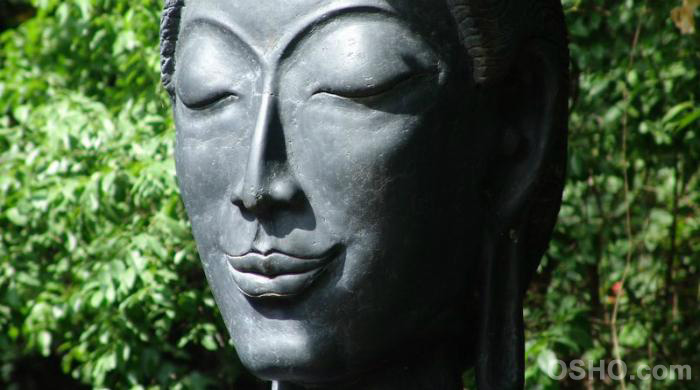
The five vows of ahimsa, satya, achaurya, brahmacharya ....
Read More >The Alchemy of Being: Brahmacharya
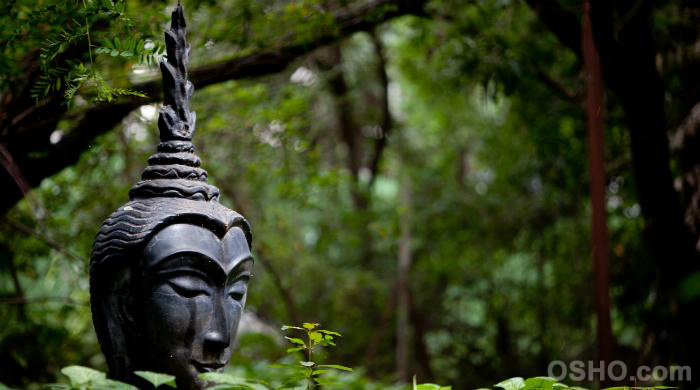
The third [of the five vows] is asteya, achaurya &ndash....
Read More >Avoiding Spiritual Constipation
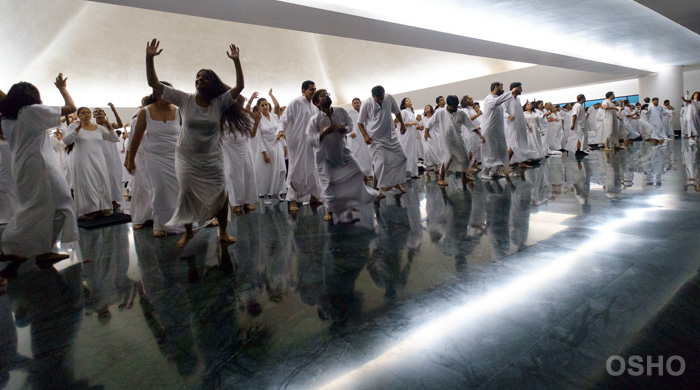
Only after brahmacharya, when you have attained to the ....
Read More >Yoga and Tantra: A Comparison

Yoga believes in struggle; Yoga is basically the path ....
Read More >Discipline: Working with the Inner Chaos

Yoga is nothing if it is not a discipline. Yoga is not ....
Read More >Your Route: The Path of the Ascetic or the Path of the Mystic?

There are two paths. One is the path of the warrior, th....
Read More >The Headstand: Where Are You Heading To?

Man standing on two feet created two things: it freed t....
Read More >The Path to Pure Subjectivity

After pranayam, breath regulation, is pratyahar, abstra....
Read More >Under the Influence of Grace

You exist in the world as a body; embodied, you exist h....
Read More >Why Yoga is Better than Drugs

Krishnamurti is right. Very difficult to understand, bu....
Read More >Traditional Methods for Contemporary Man?

Q: In traditional Yoga, one starts with the body &ndash....
Read More >The Universality of Dynamic Meditations
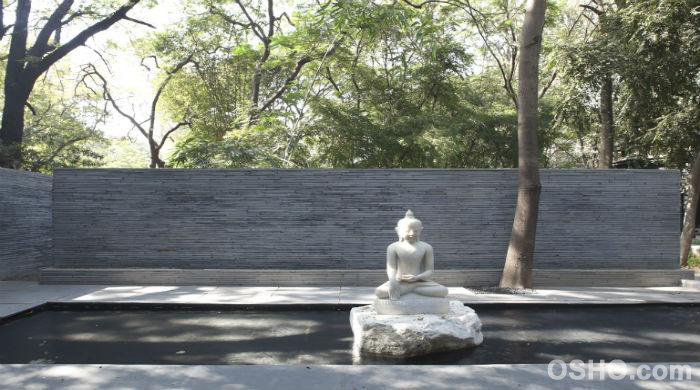
The Dynamic technique is really a very rare phenomenon.....
Read More >Kundalini: Actualizing Your Potential
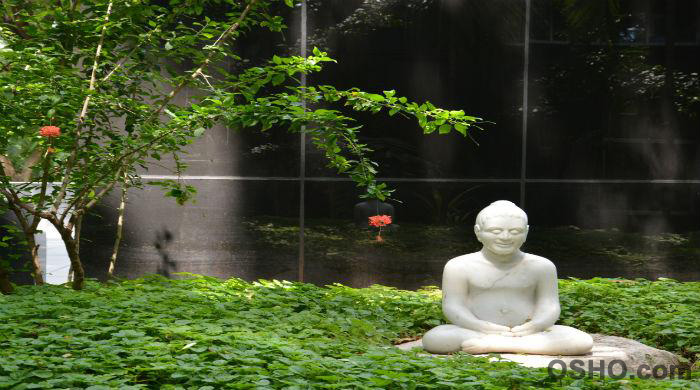
Existence is energy, the movement of energy in so many ....
Read More >Harmony: The Key to Transcendence

Life and death are only two states of energy. Life mean....
Read More >


